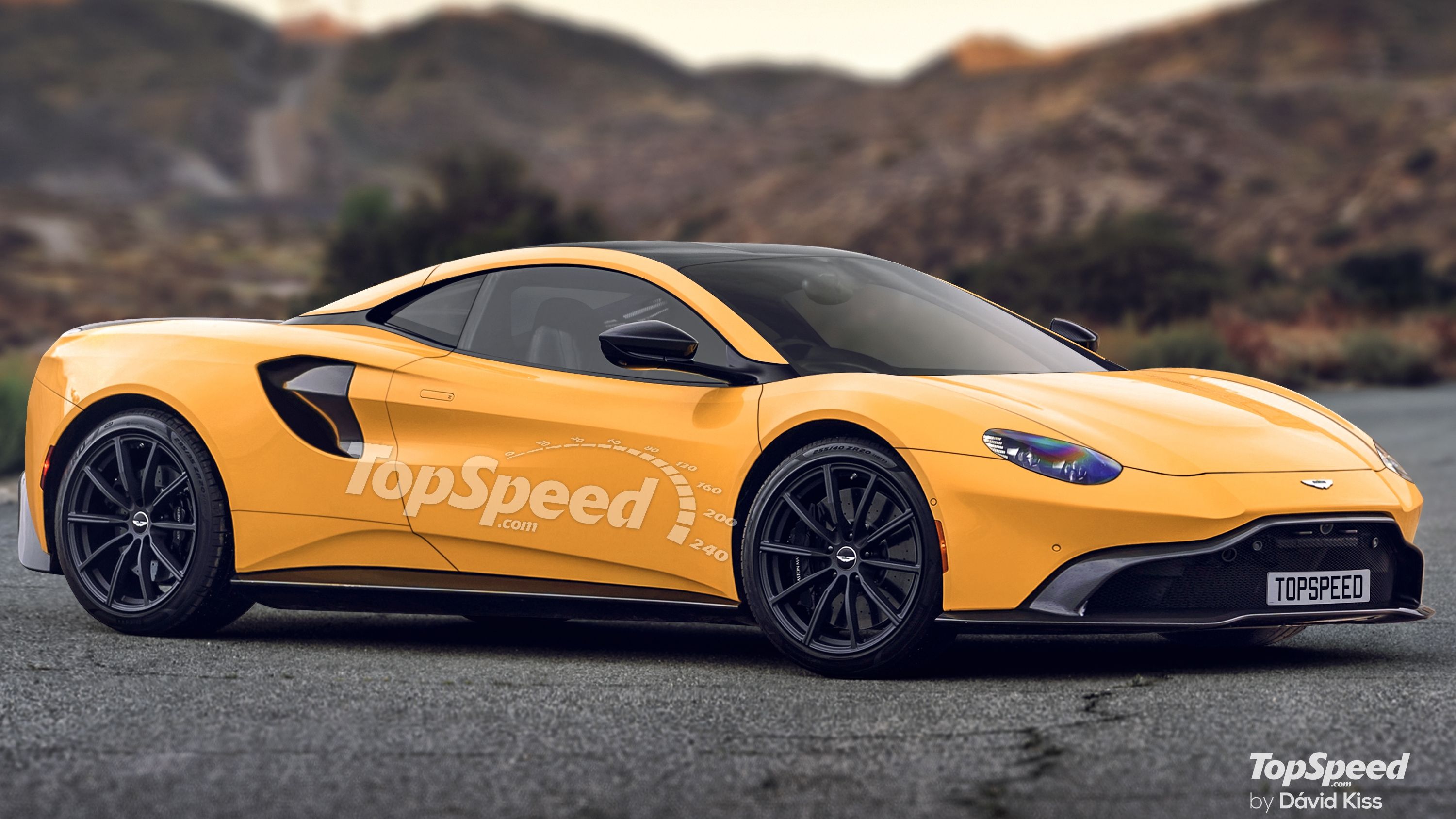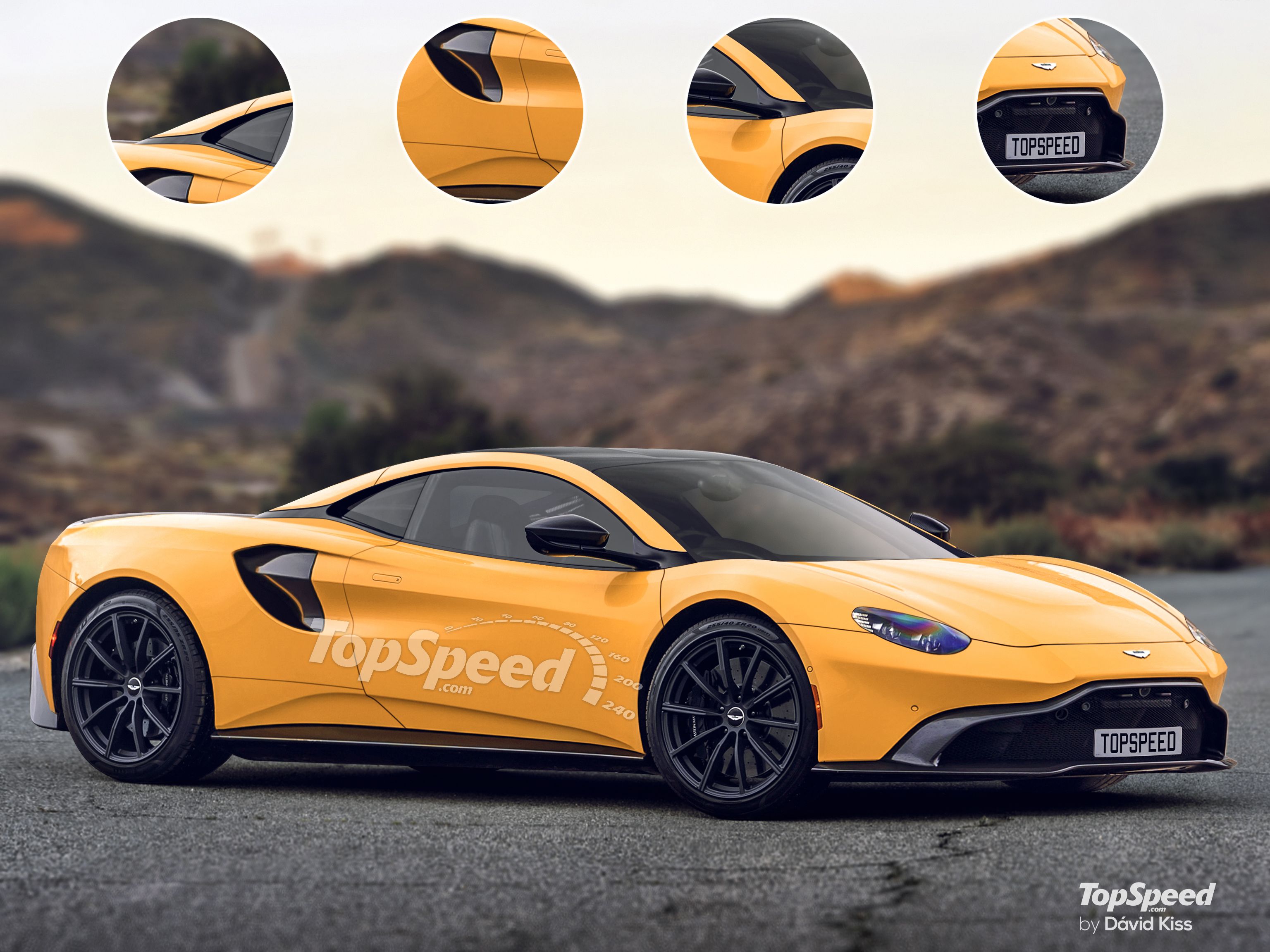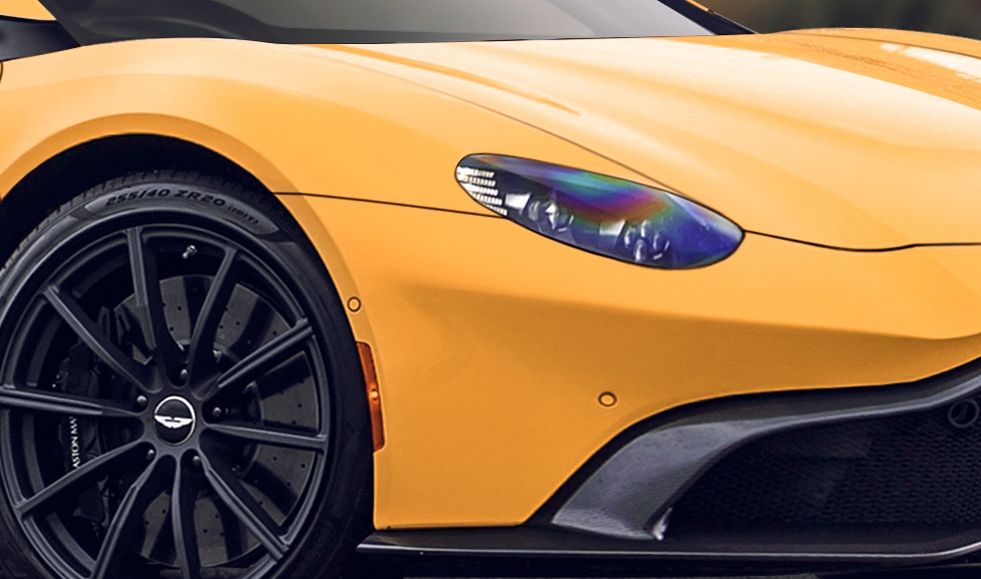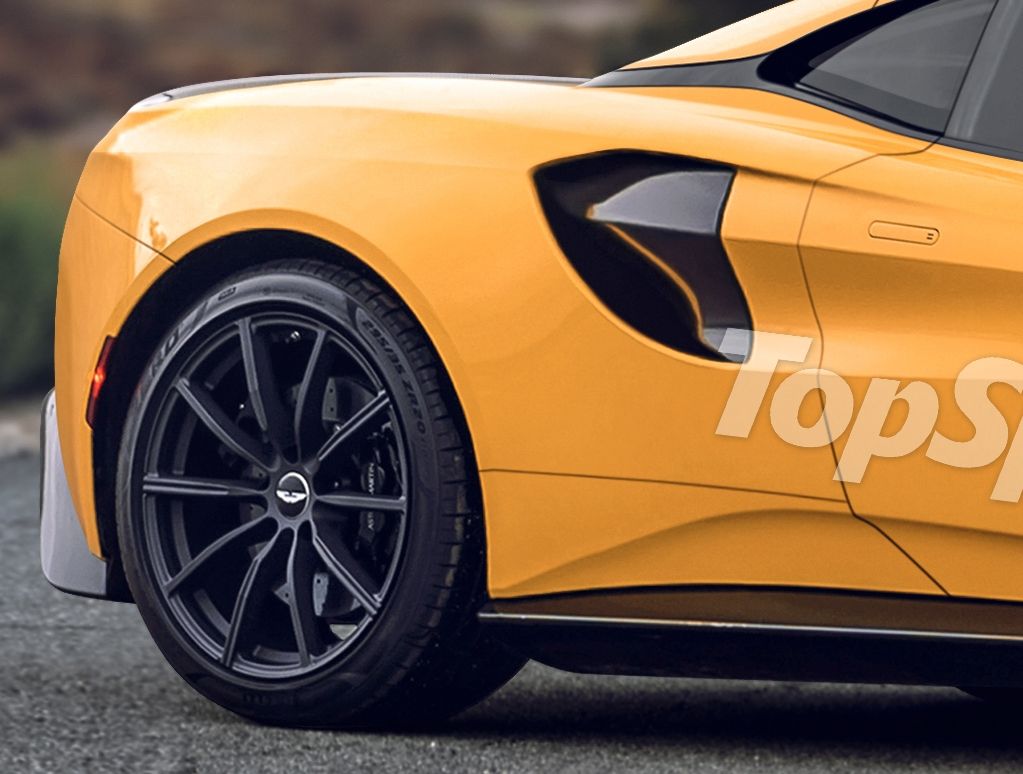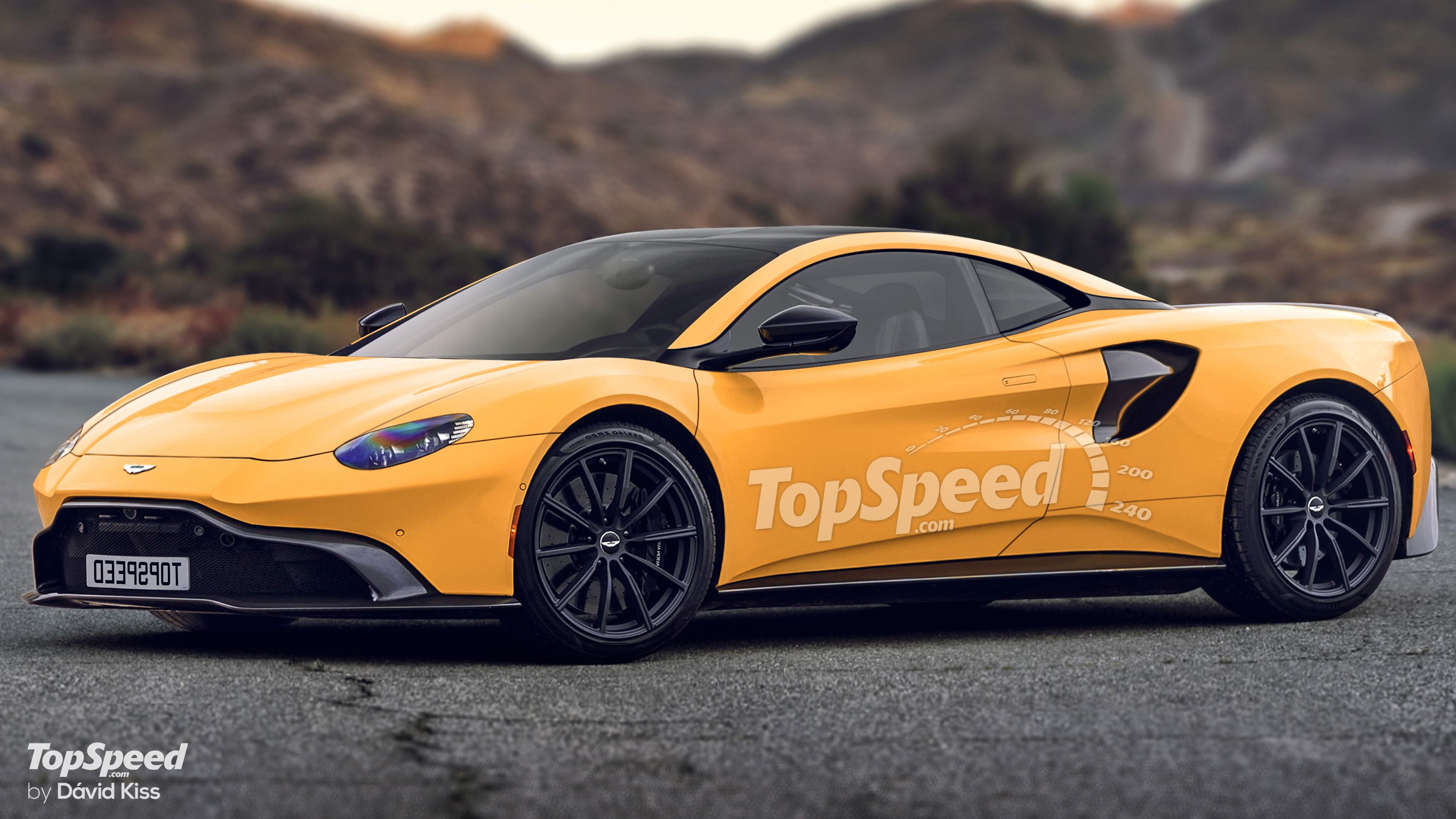Aston Martin has yet to bring the Valkyrie hypercar into showrooms, but the Brits are already pondering a second supercar for their lineup. According to company CEO, Andy Palmer, the mid-engined supercar is also co-developed with Red Bull Racing, and 130 engineers and designers are already working on the project. The new vehicle will be aimed at the Ferrari 488 GTB.
The unnamed supercar will ride on a bespoke platform developed specifically for this model. Instead of the Valkyrie's race-spec chassis or the Vantage's bonded-aluminum platform, it will get its very own underpinnings that will feature a new carbon-fiber monocoque with aluminum sub-frames. There's no specific word as to when it might arrive, but rumor has it sales will commence around 2020.
Continue reading to learn more about Aston Martin's upcoming supercar.
2020 Aston Martin Mid-Engined Supercar
- Make: Array
- Model: 2020 Aston Martin Mid-Engined Supercar
It Could Be Called the Vanquish
With no official confirmation or prototypes seen on the road, it's not surprising that this supercar doesn't have a name yet. However, Aston Martin's rival for the Ferrari 488 GTB could be called the Vanquish. Or at least that's what the company's chief creative officer said in July 2018, when he admitted that the British firm could revive the name for the upcoming sports car.
As a reminder, the vanquish badge was discontinued in 2018, when the company's flagship grand tourer was renamed the DBS Superleggera. The Vanquish name was first used in 2007 as a replacement for the Virage, but was discontinued in 2007, when Aston Martin introduced the DBS. The Vanquish returned in 2012 and remained in production until 2018. The general consensus was that it would replace the DBS Superleggera in a few years, but it could return sooner than that on this sports car.
“Without saying yes, that sounds like a plausible solution for a beautiful name like Vanquish,” Mark Reichmann told the media at the DBS Superleggera launch in Germany. It remains to be seen whether it will happen or not, as this mid-engined Aston Martin is still a couple of years away.
Exterior
There are no hints as to how the upcoming supercar might look, but our designer created a rendering using some of the company's current design language and features borrowed from or based on the Valkyrie.
The mid-engined layout will bring radical changes to the Aston Martin designs we've seen in recent years. For starters, the long engine hood specific to grand tourers will make way for a shorter nose. However, we think Aston Martin will retain some trademark cues, starting with the trapezoidal grille. Of course, the opening will sit lower in the fascia, as supercars generally have a flatter nose. The carbon-fiber grille frame will integrate a big splitter at the bottom.
The headlamps will remain familiar, although they will have a unique shape and LED lights under the covers. With the engine mounted behind the seats, the front hood won't have any outlets or louvers, although this may change depending on how the hybrid drivetrain is set up.
The profile will be completely new for an Aston Martin. The mid-ship layout will first an foremost spawn a longer rear section, as well as big cooling vents behind the doors. Like any supercar, it will have a low stance and a low roof with small quarter windows. Look for plenty of carbon-fiber here, including mirror caps, fender vent inserts, and side skirts. Carbon-fiber wheels could also be offered on the options list.
We haven't created a rendering of the rear section, but that's mostly because anything can happen back there. Aston Martin's new-generation cars are all significantly different in that area, and there's a big chance that the supercar will get a unique rear section. Don't expect anything as radical as the Valkyrie, but look for a race-inspired diffuser, slim taillights, and movable wing that hides in the bodywork when not in use.
Interior
Note: Aston Martin Valkyrie pictured here.
It's difficult to guess what this new supercar will get inside the cabin, but it's safe to assume that it will also have a unique layout. Things change quite radically with a mid-ship layout, as the cabin moves forward and the rear seats are no longer used.
Aston Martin's only mid-engined supercar, the Valkyrie, is quite extreme inside the cabin. Nearly everything is made from carbon fiber, with Alcantara used on the steering wheel, parts for the dashboard, and the seats. The squared-off steering is borrowed from the racing world and includes a small display in the center alongside various buttons and knobs. There's no center console, while a second display is placed on the passenger-side dashboard.
Note: Aston Martin Valkyrie pictured here.
While the upcoming supercar won't be as radical, look for plenty of carbon-fiber and a pair of motorsport-inspired seats with heavy bolstering. In order to counter offerings from Ferrari and McLaren, Aston Martin will probably offer optional carbon-fiber seats similar to the Valkyrie.
The dashboard, however, will have a more common design and not as much carbon-fiber. The steering wheel will also be more down to earth, with a flat-bottom design, while the instrument cluster will be placed behind it. The cabin will also get a more conventional center console that will host a few controls and a center stack that will include the infotainment display. Leather and Alcantara should be standard, but there will probably be an Alcantara-only option for those who want a more race-inspired design.
Needless to say, it will feature Aston Martin latest technology and it will probably get some features from the hardcore Valkyrie.
Note: Aston Martin Valkyrie pictured here.0}
The supercar will use a hybrid drivetrain, but Aston Martin has yet to provide hints about it. However, CEO Andy Palmer said that it won't use a V-12 engine like the Valkyrie.
With the big V ruled out, the new supercar will probably get the twin-turbo, 4.0-liter V-8 that Aston Martin is already using in the Vantage and DB11. Sourced from Mercedes-AMG, the unit cranks out 503 horsepower and 505 pound-feet of torque in the Vantage and DB11, but it generates a whopping 630 horses and 627 pound-feet in the Mercedes-AMG GT 4-Door Coupe.
The engine could be paired with Mercedes' 48-volt hybrid system, which would turn the supercar into a mild hybrid. Output is still a mystery, but Aston Martin needs at least 650 horsepower to compete with the likes of the Ferrari 488 GTB and the McLaren 720S.
As I mentioned previously, it will use a brand-new carbon-fiber monocoque with aluminum sub-frames and it will probably ride on an intricate suspension system honed on the race track. The sprint from 0 to 60 mph should take less than three seconds, while top speed will be reached beyond the 200-mph mark.
The supercar should also be excitingly quick at the track, and Aston Martin may attempt a Nurburgring record in its class.
Drivetrain
The supercar will be anything but cheap. Expect it to compete in the same price range as the Ferrari 488 GTB and McLaren 720S, which means that it could fetch anywhere between $270,000 to $300,000 on the U.S. market.
Prices
Ferrari 488 GTB
Introduced to replace the iconic 458 Italia, the 488 GTB is the benchmark supercar in this segment. It has an aggressive design inspired by the LaFerrari and a sporty interior that boasts top-notch craftsmanship and combines race-inspired features with luxury items. The 488 GTB was the second modern Ferrari to make the switch to turbocharging, gaining a 3.9-liter V-8 that cranks out a solid 660 horsepower and 560 pound-feet of torque. Charging to 60 mph takes 2.9 seconds, while top speed is rated at 205 mph. Pricing for the 488 GTB starts from $242,737 in the United States.
Read our full review of the 2018 Ferrari 488 GTB.
Lamborghini Huracan
The Huracan is already a few years old, but it remains a solid option in this niche. Featuring a more angular and cleaner design, it's also a unique choice and somewhat retains the design heritage of the iconic Countach. Its cabin is packed with leather, Alcantara, and other expensive materials, but it also looks as if its ready to sustain a full 24-hour race around the Nurburgring. Motivation comes from a 5.2-liter V-10, the largest engine in this comparison, but output is inferior to the competition at 610 horsepower and 413 pound-feet of twist. A seven-speed dual-clutch transmission routes the power to the wheels, enabling the Huracan to hit 60 mph in 3.1 seconds, to go with a top speed of 201 mph. Pricing starts from $237,000, which makes the Lambo the most affordable of the bunch.
Read our full story on the 2018 Lamborghini Huracan.
McLaren 720S
The latest supercar to arrive in this niche, the 720S replaces the 650S in the Super Series lineup. Far more radical by design, even when compared to the Ferraris and the Lamborghinis, the 720S takes many of its cues from the P1 and combines them with unique, organic lines inside and out. The extremely aggressive exterior is backed by a race-inspired cockpit that brings together a flat-bottom steering wheel, a rotating instrument cluster, a vertical infotainment display, and loads of leather, Alcantara, and carbon-fiber. Motivation comes from a 4.0-liter V-8 derived from the familiar 3.8-liter unit. The twin-turbo mill cranks out a whopping 710 horsepower and 568 pound-feet of torque and pushes the 720S from 0 to 60 mph in 2.8 seconds. Top speed is rated at 212 mph, making the 720S the quickest and fastest sports car in this segment. Pricing starts from $284,745 before options.
Read our full review of the 2018 McLaren 720S.
Conclusion
This supercar is extremely important for Aston Martin. Having already entered the extreme performance niche with the Valkyrie, the Brits now need a less extreme and more affordable supercar to tackle more mainstream vehicles from Ferrari, Lamborghini, and McLaren. Aston Martin is already in a solid position on the grand tourer and sports car market with the Vantage, DB11, and DBS Superleggera, and a $250,000 supercar seems like a good step for a premium automaker that wants to expand. What's more, a new supercar will help Aston Martin overcome its financial problems much quicker.
Further reading
Read more Aston Martin news.

